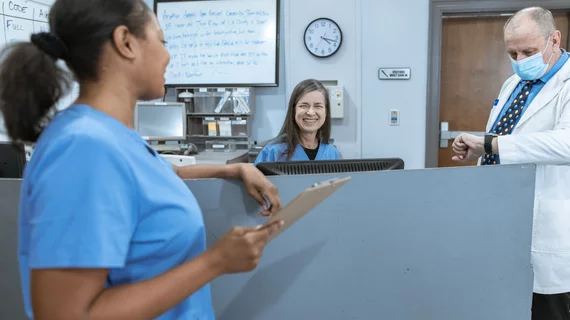ACR Association announces winners of grants to fight nonphysician scope of practice gains
The American College of Radiology Association on Tuesday announced the first state winners of grant money to help local organizations fight nonphysician scope of practice gains.
ACRA said the funds will go to Kansas, New York, Pennsylvania and Wisconsin, but declined to disclose the recipients, individual dollar amounts or projects funded. The organization first announced the effort in July, with a pot of $225,000 in available funds, and started accepting applications from imaging advocacy groups in September.
“Our state radiological societies continue to be on the front lines of dangerous scope of practice expansion efforts that would threaten patient safety and erode access to high quality radiological care,” Board of Chancellors Chair Howard Fleishon, MD, said in a statement. “The ACRA is committed to helping these state radiological societies as they work to educate lawmakers about the importance of radiologists and radiologist-led teams, and the [scope of practice] fund is one tool that can assist with their efforts.”
The college also recently launched a website dedicated to this topic, noting that it is currently tracking “hundreds” of bills nationwide, including those related to practice scope. Among the four states receiving ACRA grants, the website highlighted two bills being tracked in Kansas, five in New York, six in Pennsylvania, and eight in Wisconsin. Kansas’ concern, for instance, relates to updating scope of practice requirements for advanced practice registered nurses without a supervising medical doctor.
The number of such nonphysician providers has doubled over the last decade, including more than 325,000 APRNs and 150,000 physician assistants. This has been driven in radiology by efforts to cut costs, along with a lack of trained medical specialists, Daniel Rodgers, MD, wrote recently in the ACR’s Bulletin. There is also a growing number of rads letting such providers take on minor procedures, with some physicians only operating in their specific subspecialty.
Rodgers said ACR recently formed a task force to address this issue, while also passing resolutions at its annual meeting “strengthening the college’s position” against nonphysician image interpretation.
“While we can and must fight against further expansion of the scope of practice for NPRPs, the outcome of the college’s legislative efforts is largely outside our control,” wrote Rodgers, who is chair of ACR’s Commission on General, Small, Emergency, and/or Rural Practice Economics Committee. “However, the training of new radiologists and the delegation of work within our practices is entirely ours to determine.”
Related Radiology Non-physician Providers Content:
ACR Association announces winners of grants to fight nonphysician scope of practice gains
Neiman Health Policy Institute finds 18% increase in radiology employed non-physician providers
New York grants nurse practitioners full practice authority, despite radiologist opposition
Nonphysician providers are interpreting more imaging exams — but still less than 2%

